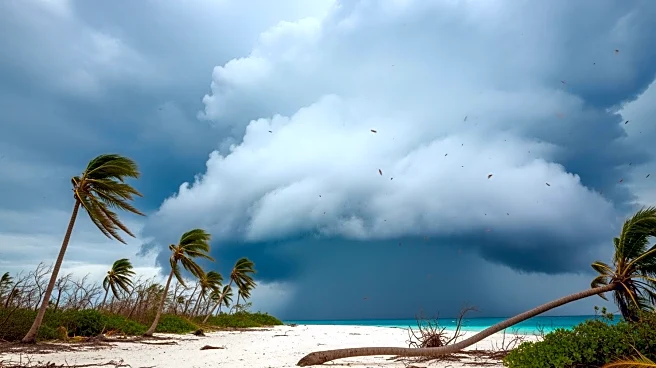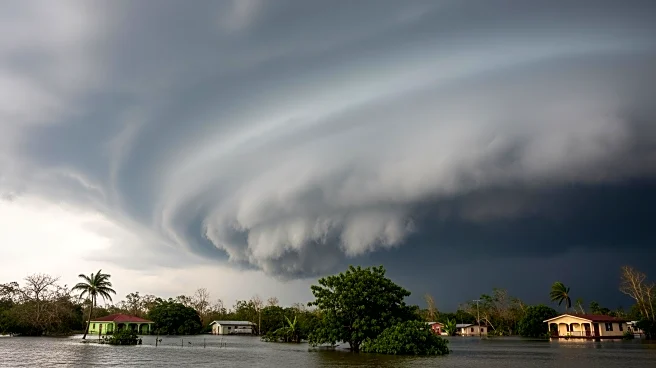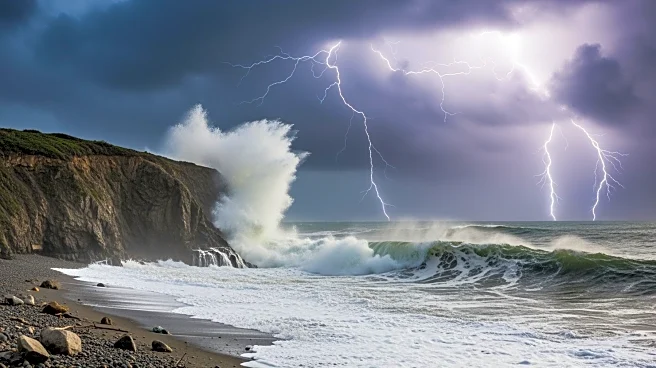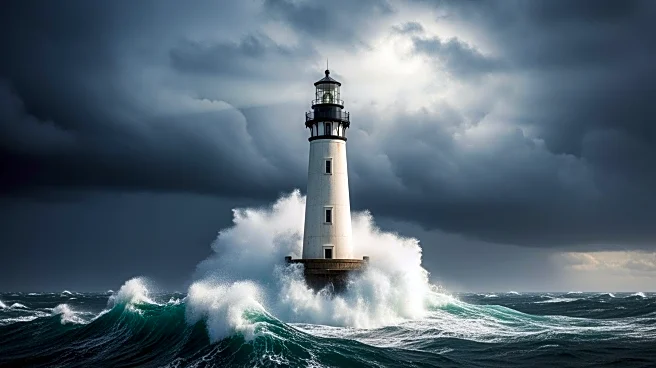What's Happening?
Jamaica is working to recover its tourism industry following the impact of Hurricane Melissa, a Category 5 storm that caused significant damage to popular tourist destinations. Edmund Bartlett, Jamaica's
Minister of Tourism, reported that approximately 60% of the island's tourism assets were affected, with Montego Bay experiencing the most severe damage. Despite the challenges, efforts are underway to reopen the island for business by December 15, with airports operational and many hotels preparing to welcome visitors. Tourism is a vital component of Jamaica's economy, contributing 30% to the GDP and employing 20% of the labor force.
Why It's Important?
The recovery of Jamaica's tourism industry is crucial for the country's economic stability, as tourism generates over 55% of its foreign exchange. The swift reopening of tourism facilities is essential to mitigate economic losses and support the livelihoods of those employed in the sector. The government's commitment to rebuilding with resilience, incorporating advanced technology and improved infrastructure, aims to safeguard against future climatic events. This approach not only addresses immediate recovery needs but also strengthens Jamaica's long-term economic and environmental resilience.
What's Next?
Jamaica's recovery task force is actively working to restore essential services and infrastructure, ensuring that workers have access to necessary amenities. The government plans to enhance building codes and energy distribution systems to better withstand future hurricanes. As the island prepares for the peak tourism season, the focus remains on rebuilding stronger and more resiliently. The success of these efforts will be critical in attracting tourists back to Jamaica, thereby supporting the economy and demonstrating the island's capacity to overcome natural disasters.
Beyond the Headlines
The hurricane has highlighted the need for improved settlement management to prevent flooding and erosion. Jamaica's approach to recovery emphasizes the importance of resilience in energy distribution, with plans to entomb cables underground to protect against storm damage. These measures reflect a broader understanding of the challenges posed by climate change and the necessity for adaptive strategies in vulnerable regions.











